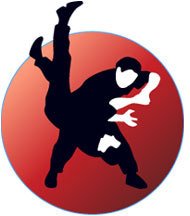I was at work 2 nights ago when I went on a call for a stabbing victim; this call reminded me of some things that I had learned from some of my old instructors.
Where are his hands & how close is he?
We could critique this call for all the things this guy did wrong to get in this situation, but that would make this essay even longer, so we are going to focus on one point today and deal with the other components at a later date.
This call was an assault on a homeless man who was with his wife in the park at night. As the victim states he was walking through the park when the attacker approached him and seemed to be arguing with the victim. While they were arguing the attacker became physically aggressive, at this time the victim noticed his left side on his back was wet and that is when he realized he had been stabbed.
The victim had a 1’’ – 1 ½ ‘’ laceration on the left side of his back around the posterior auxiliary area and he had a baseball size hematoma right under the injury. The victim had no idea what he had been stabbed with or that he had been stabbed until seeing or feeling the blood. He did complain of pain on breathing, but on feeling around the injury sight I did not elicit any pain from him. He was breathing shallow & said it was more painful to take deep breaths. The victim stated that he had no idea if he had been stabbed or slashed and the hematoma kept growing if pressure was not kept on the injury. This victim was considered acute even though his blood pressure and heart rate were normal; because I had no idea how long the knife was or if he was stabbed or slashed, which would let you know how life threatening the injury was, so we just treat the injury for the worse it could be.
What I learned here was you needed to keep an eye on your attackers hands, because that is where most of the damage to you will come from. If someone came up to you with his fists closed and up in front of him you would immediately know that this is a possible threat to you. But if his hands where in his front pockets as he approached you may not think anything about it until it is to late. How about if all you can see is his elbows at his side? Like when you would have your hands in your back pockets. Does any of this raise your alert level? Are his hands open at his side or closed? If closed do you see his fingers or the back of his hands? What does he have in his hands? For most people out there the hands are going to be the main threat.
You need to keep in mind another thing. How close is the possible attacker? You should not let anyone that is being hostile towards you within 5 feet of you. This keeps his hands out of range and possibly his feet. You want your attacker to have to take a big step towards you if he wants to hurt you. That way you have some time to get yourself ready for action. You should already have your hands up in the window of combat (imaginary rectangle bordered from eyes to groin and as wide as your shoulders), so that the attacker has some sort of obstruction in his way if he tries to get to you.
You don’t have to have fists just your open palms almost like you are in a semi-surrender hands-up position. This does a couple of things for you; it gives the outside impression that you are not starting the confrontation/fight so that if there are an witnesses they can testify that you were on the defensive. It will possibly look better for you in court if it goes that way. Second, it gives the appearance that you are passive and not a threat. In the end, this will set him up if he decides to attack.
Just My Thoughts. (JMT)
Subscribe to:
Post Comments (Atom)

No comments:
Post a Comment